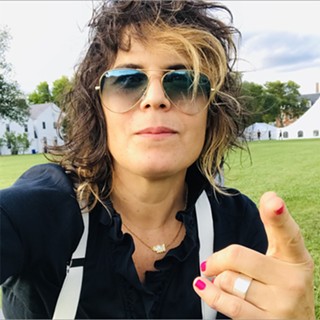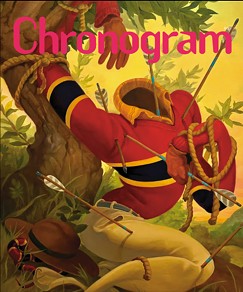Among the greatest of hidden secrets in the Hudson Valley is Opus 40 in Saugerties, an extraordinary one-man site-specific earthwork by Harvey Fite (1903–1976). A pioneering sculptor, painter, and educator, Fite worked diligently on the Opus 40 project for 37 years, all of it his own doing and design (he died three years short of his 40-year goal).
During that time, he founded the fine arts program at Bard College, where he taught for over 35 years. With its subterranean passageways and temple-like setting within a 6.5-acre bluestone quarry nestled into 63 acres of meadows that face the Catskill Mountains, the magnificent Opus 40 is also home to a humble art gallery inside a rustic red barn. Their exhibition "Bruce Cahn: Woodstock Work," curated by Jen Dragon and on exhibit through June 8, is a graceful homage to the late artist and student of Fite’s at Bard College.
Born in the Bronx, Bruce Cahn (1942–2020) is said to have lived a solitary existence as an outsider. During his youth he spent considerable time in the basement of his family home while developing his affinity for drawing and sculpting. Cahn went on to study at the Arts Students League and Rhode Island School of Design (and at Bard as previously mentioned) and he eventually relocated to Woodstock.
During his lifetime he avoided showing his work publicly and this exhibition is one of the only presentations of his art to a wider audience. Including works on paper and three small sculptures, the show reflects Cahn’s use of geometric patterns and universal symbolism to conjure feelings of mystical connectivity and enlightenment, and Blue Eye Mandala (2016) is a strong example of this. Featuring a solid blue circle enveloped in black with a smaller black circle in the middle and a white slit inside another blue sphere, this work stares directly at us with an eyeball that never blinks.
Other works such as Flower Mandala (2016) include a layering of shapes that appear to spin, in this case two triangles within a series of circles that thrive in relation to another set of outer squares. Chan’s smaller works on paper seem to be studies for the larger mandalas and Lip Mandala (2017) offers clues into his private cosmos. In this work, we see four circles balanced by four red crosses with pencil-drawn lips inside a circle within a square, where everything harmonizes while simultaneously being obliterated off the edge of the paper—altogether a vision of sacred expansion(s) in a timeless realm.
The most striking work is Seated Model (2018), featuring a female figure set against a Mondrian-esque backdrop, her gaze unflinching and her body an undulating flow of blue hues. Chan’s recurring themes (triangles, circles, squares, and lotus petals) and his limited color palette (mostly blue, black, red, and yellow) results in a focused body of work that illuminates his devotion to art as a spiritual practice. What we do not see in this lovely little show are examples of work from Chan’s other creative outlets, including his street photography and eccentric self-portraits.
After you experience the aesthetical-vibrational healing of Cahn’s art you will naturally float from the gallery space to the adjacent gift shop full of enchanted objects, including a section of wind chimes that together bore exquisitely transcendent melodies that further compliment the harmonious ethos of the entire Opus 40 environment. This special show is open for one more weekend (coming up) and if you have not experienced the sheer magic of Opus 40 yet, this is precisely the time to visit.

















